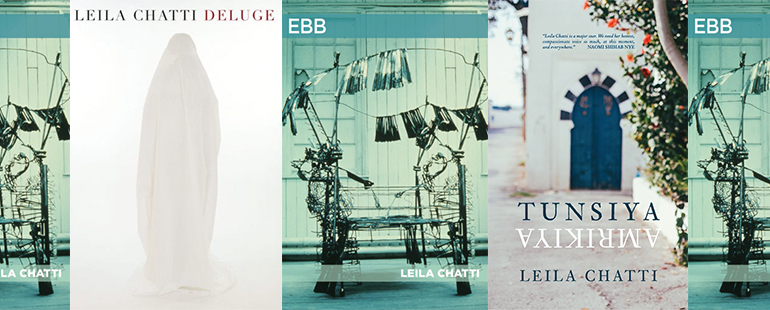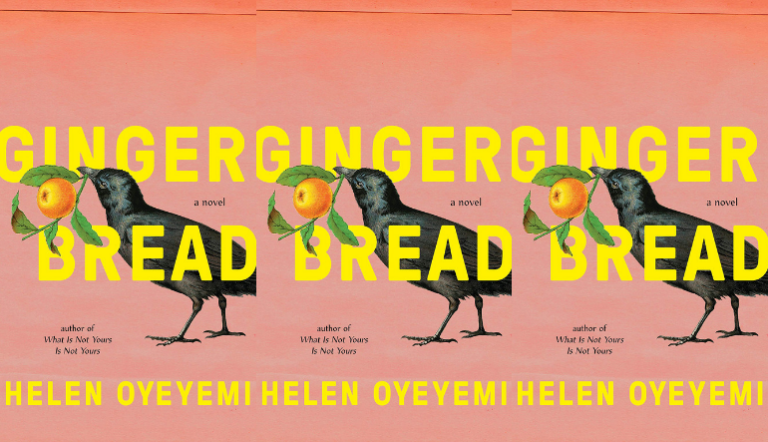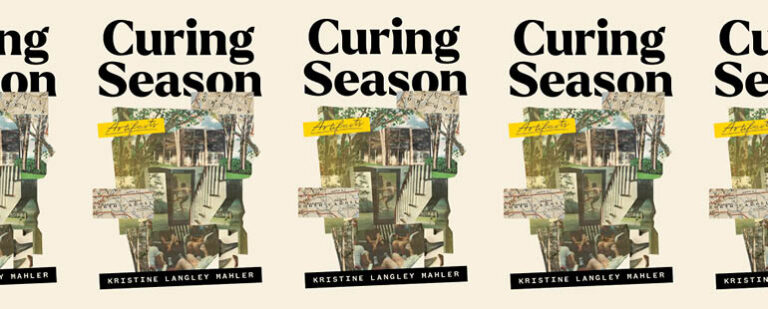Writing While Biracial

I’ve been thinking lately about the state of contemporary biracial poetry in America, about the types of biracial experiences that publishers are most apt to print in journals and books. Common tropes associated with biracial literature—that we are forever outsiders, that our identities are “split” rather than two wholes—is the conflict at the center of a lot of biracial poetry. Documenting this experience is worthwhile, and the necessity of interrogating these fallacies may never end. I do often wonder, though, to what extent the (white) publishing industry spearheads biracial folk into writing mixed-race trauma narratives en masse because that is what they assume sells best. And at what cost? What other nuances of biracial experience do we lose to a culture most interested in our trauma? Having written quite a lot of what I am calling “mixed-race trauma narratives” myself, I’ve lately been rereading Leila Chatti’s burgeoning body of work in order to think through alternate models of writing while biracial.
Chatti, winner of the 2016 Ploughshares Emerging Writer’s Contest in poetry, is a biracial Tunisian American writer born to a Muslim father and Christian mother. Author of the chapbooks Ebb (2018) and Tunsiya/Amrikiya (2017) and the poetry collection Deluge (2020), she has published widely about her experiences growing up culturally mixed, and in interviews her biracial identity is often a point of emphasis. In her 2015 interview with the Residential College in the Arts and Humanities Center for Poetry at Michigan State University, for example, she notes, “I make a point to always identify first as a Tunisian-American poet because, growing up, I couldn’t find literature written by someone like me and that made me doubt whether my experience was worth writing about.” In several other interviews she has commented on conflicting early messaging she received from (white) peers—and even writing mentors—encouraging her to whitewash “the unfamiliar” (i.e. her Arab identity) and/or lean into tokenism. The poems in Ebb, Tunsiya/Amrikiya, and Deluge subvert the expectation that Chatti, as a Tunisian American writer, write as “just” Tunisian or “just” American—or just as the Tunisian American writer for whom mixed identity itself is the chief subject and source of conflict in her work.
In Chatti’s early twenties, tumors in her uterus caused constant, painful bleeding. Deluge chronicles her experience of illness, her diagnosis with sarcoma, the surgical removal of the tumors, and her eventual recovery after the tumors were found benign. The collection is as much about illness as it is about her relationship to God and the female body. Equally noteworthy, biracial identity, while wholly present, is not at the forefront of Deluge as a cause for conflict and analysis. References to both Islamic/Southwest Asian and North African (SWANA)/Tunisian culture and Catholic/white/American culture serve as entry points for several poems, which Chatti presents without question, conflict, or explanation. (I should note that while religion, culture, and race are necessarily not interchangeable, in the context of Deluge, “Muslim” often reads as shorthand for Tunisian and/or SWANA, and “Christian” often reads as shorthand for American and/or white. In the context of Chatti’s life experience, this makes sense given the particularities of her mixed heritage: her father is Tunisian, Muslim, and SWANA; and her mother is American, (lapsed) Catholic, and white. I’ve chosen to reflect this usage.)
Recurring titular and epigraphic references to Arabic and Qur’anic literature ground the reader in poems such as “Mubtadiyah,” “Zina,” “Nulligravida Nocturne,” and “Awrah.” “Mubtadiyah,” for example, begins with the translation “beginner; one who sees blood for the first time” and with the epigraph, from the Holy Qur’an, 82:10-12, “And indeed, appointed over you are keepers, Noble and recording; They know whatever you do”—both of which contextualize the anxiety with which Chatti meets her menarche. Likewise, titular and epigraphic references to biblical literature and Catholicism scaffold several others. The first of two poems titled “Deluge” begins with an epigraph from Matthew 24:39—“And they were oblivious, until the flood came and swept them all away”—and the biblical refrain “And so it was.” Similarly, the second rendition begins with quoted language from both the Bible and the Qur’an: “And behold: I, even I, did bring a flood. And the spirit of God moved upon the face of the waters. And it was said: O heaven desist! Oh I wish I had died.”
In other poems, including “Confession,” “Mary in the Waiting Room at the Gynecologist’s Office,” “Immaculate or Otherwise,” “Questions Directed Toward the Idea of Mary,” and “Sainte-Baume,” Chatti explicitly engages with a lineage of Marian poets. In “Confession,” her opening poem, she meditates on the bodily and spiritual experience that (Virgin) Mary undergoes while giving birth to Jesus, that “boy-God pushing on / her cervix.” Much like in a persona poem, here the subject, a holy figure in both Christianity and Islam, serves as a vehicle for the speaker to contemplate her own relationship to God. We see this religious duality immediately, as the title “Confession” frames the poem within the Catholic sacrament of confession (as well as within the poetic tradition of confessionalism) while the epigraph—“Oh, I wish I had died before this and was in oblivion, forgotten”—comes from the Qur’an. Throughout the poem, too, Mary blurs between Qur’anic (for example, when Chatti describes Mary’s child as a “blessed adolescent”) and biblical depiction (for example, when Chatti describes him as a “boy-God,” “His child”).
“Truth be told,” Chatti begins, “I like Mary a little better / when I imagine her like this.” By “this” Chatti means human and bodily with “girl-sweat lacing / rivulets like veins in the sand”—and, therefore, “not all / holy.” She means imagining her as someone “suffering” because of “His plans” and as someone whose consequent bodily “ache could undo you / like a knot”—someone “indignant” and who would choose suicide (“Oh, I wish I Had died . . .”) and damnation if it would make the pain stop. Of course, the subject here is not just someone. It is the holiest woman of the Bible and, actually, the only named woman in the Qur’an. This humanization of Mary has the effect of blurring the subject and the speaker who, too, suffers, as all humans do. It raises the question of what it means to be holy—and, more generally, what it means to be faithful—as a woman and in the face of pain. Like in several other of her poems in Deluge, Chatti’s biracial heritage—here Mary is the vehicle for the biracial self within the context of illness—functions as backdrop. That multiple cultures coexist in this poem is a given. It’s not even the point.
Deluge is not Chatti’s first publication that presents alternative models for expressing biracial experience: her chapbook Ebb challenges the normative assumption that, as Chatti herself puts it in an Adroit Journal interview with Chaya Bhuvaneswar, “being nonwhite is the only interesting or valuable thing” about her; at the same time, she observes, “If I, an Arab, have written a poem, is that not an Arab poem?; and Arabs also get sick, and write about it.” Ebb may be her most obvious manifestation of these sentiments. In this chapbook, the most obvious references to Chatti’s biracial heritage are setting shifts from Tunisia, in “Fasting in Tunis” and “Ramadan Lament,” to America, in “Walking through Provincetown in January, I Fall in Love Again.” More often, though, the setting is nondescript; what we know best is simply that the poems take place by the ocean. In some ways, this chapbook seems like Deluge’s echo in that here, too, Chatti’s biracial heritage serves as backdrop without need for explanation, allowing other themes to take the foreground: unrequited love, desire, and healing.
In contrast to Ebb, Tunsiya/Amrikiya confronts biracial identity from the title onward. The title is the translation of “Tunisian American” in Arabic. The choice of slash is nuanced. At the same time as it creates a textual barrier between the two identities, implying a split, it also denotes a compatible interchangeability between the two. Fittingly, this is a collection that both presents biracial identity as halves and wholes. Written in the wake of the 2016 elections, it is an exploration of the stark realities of growing up biracial both in America and in Tunisia. When she considers the subject of growing up biracial in America in the poem “Motherland,” she thinks of her mother who was compelled to “name me Leila because it was a song / white men played on air guitars, which meant, // she’d hoped, they couldn’t hate me.” Similarly, when she considers the subject of growing up biracial in the poem “Farq,” she writes that “it was as if / I’d aligned, stunned, into another world.” Yet, poems like “Muslim Christmas” offer an alternate model of what biracial experience may look like. The title of “Muslim Christmas,” much like the title of the collection, offers a sense of duality, an equal weight. Although, as a devout Muslim, Chatti is careful to denote Jesus as “our non-savior” and “human,” and the Christmas tree as a “false icon,” “the altar / of the unbelieving,” “Muslim Christmas” is also a tender celebration of American Christian heritage. Decorating the Christmas tree, the young Chatti siblings “cradled” their mother’s ornaments “in our palms like baby Jesus might have / been held.” It is with sweetness, open possibility, awe even, that she “marveled at how / merciful this man-God could be” and who, even to nonbelievers, gifted “chocolate, snow boots, everything we liked.” What is revolutionary about a poem like “Muslim Christmas” is that it practices perspective-taking and empathy; it allows identities often portrayed as disparate to exist not just in neutrality or tolerance, but celebration.
As I write, I find myself rereading Chatti’s Adroit Journal interview again and again. She pushes back against my call to push identity to the wayside. “At some point I internalized the idea that ‘serious writing’ was writing where identity was in the background,” she clarifies, “because I had been raised with a canon composed of writers whose whiteness/Westerness/Christianity was so centered that it wasn’t even considered an identity, it was considered human experience.” This internalization was once lodged in my psyche as well—is it still? All I know is that this is an imperfect, incomplete study, that there are so many more ways that biracial people experience their lives than is currently represented in the publishing industry. Is bearing witness to racism, internalized and otherwise, worthwhile? Absolutely. Do all of us experience our multiple racial identities as our most interesting attribute? Not so much. Writers and editors owe it to themselves and their readers to publish beyond tropes, to live up to that diversity.
This piece was originally published on February 9, 2021.


